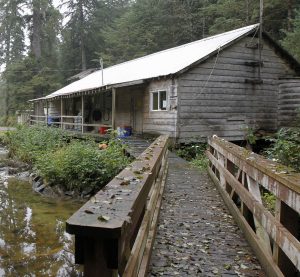Home • Kitasoo Xai’xais Nation • Programs • Salmon Enhancement Program
The Kitasoo Xai’xais Salmon Enhancement program has been operating at the Klemtu Hatchery since 1982 in efforts to conserve salmon stocks, provide recreational, commercial and Aboriginal fishing opportunities, and support stock assessment. Each year, 1.5 million chum and 75,000 coho are raised with a 92% survival rate (many times greater than in the wild).
The activities undertaken at the hatchery follow the natural life cycle of each salmon species. Hatchery staff capture adult salmon as they return to the river in the fall. Eggs are taken from the returning spawners, fertilized and incubated at the hatchery. They are raised here through the winter. After the eggs have hatched and the young salmon called alevin have absorbed their yolk sacs in the spring, the juveniles are moved to a local sea pen and fed until they reach a weight of 20 grams before they are released to the ocean.
image credit: Moonfish Media


The sockeye hatchery has been operating at Victor Creek since 1993. The purpose of this hatchery is to increase numbers of sockeye salmon in Lagoon Creek on Roderick Island. This project began with a population below an impassable barrier lower in the system. Local fisheries technicians take 50,000-75,000 eggs from these fish, incubate them and raise them to 2 grams before releasing them further up the system into Roderick Lake. These fish tend to spend an extra year in the lake, grow very large (to 100g), and contribute to the local food fishery. This program is operated by Co-management Fisheries, in conjunction with DFOs Salmon Enhancement Program and Aboriginal Fisheries Strategy.
Stay up to date on community events, announcements, and news.
Website by: Owen Perry